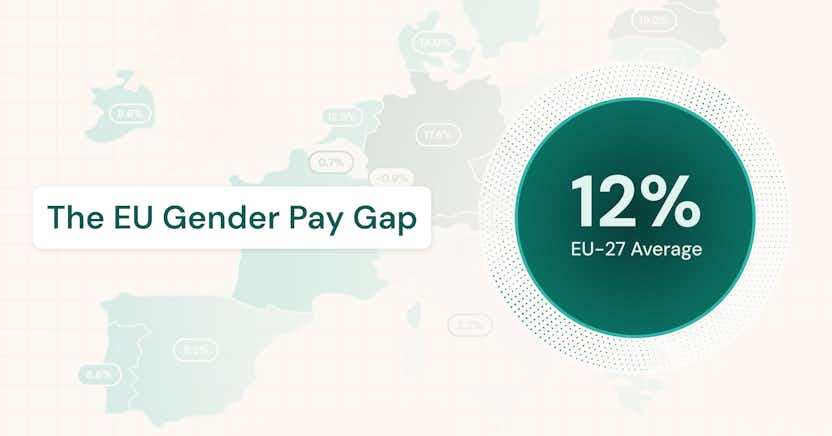What Is HR Transformation?
HR transformation refers to the strategic process of redesigning human resources functions, systems, and structures to better align with an organization's goals, workforce dynamics, and technological capabilities. It involves more than just modernizing administrative tasks; it encompasses a fundamental shift in how HR contributes to business performance. At its core, HR transformation is about moving from transactional HR to strategic HR, leveraging data, technology, and cross-functional collaboration to drive value.
Why is HR transformation important?
The role of HR has evolved significantly over the past two decades. No longer confined to back-office personnel management, HR now plays a critical role in shaping culture, enabling workforce agility, and ensuring regulatory compliance. This shift is driven by several forces: globalization, digitization, demographic changes, the rise of remote work, and shifting approaches to diversity, equity, and inclusion (DEI).
HR transformation enables organizations to meet these challenges head-on. By rethinking HR strategies and adopting more integrated and data-driven tools, companies can improve employee experience, foster innovation, and build sustainable competitive advantage.
What are key features and forms of HR transformation?
HR transformation can take various forms depending on the organization’s context, maturity, and strategic objectives. Common components include:
- Technology integration: Replacing legacy systems with modern Human Capital Management (HCM) platforms, or dedicated point solutions like compensation management and pay equity tools, to streamline processes and gain actionable insights.
- Process redesign: Reengineering workflows to remove inefficiencies, ensure compliance, and support scalability. This includes automating repetitive tasks and standardizing decision-making protocols. Ideally the technology should enable the optimum process and not introduce limitations.
- Organizational restructuring: Aligning HR teams around centers of excellence (COEs), shared services, and business partner models to improve service delivery and strategic alignment.
- Data-driven decision making: Leveraging HR analytics to guide talent strategy, compensation planning, and workforce planning.
- Employee experience / User experience (EX / UX) focus: Redesigning HR services around employee journeys and life-cycle moments to increase system adoption, employee engagement, and talent retention.
- Strategic workforce planning: Anticipating future talent needs and aligning HR capabilities with long-term business goals.
Why is HR transformation necessary?
Without transformation, HR functions can become a bottleneck to organizational progress. Traditional HR models often rely heavily on manual processes, siloed data, and outdated structures that hinder responsiveness and adaptability. In a rapidly changing labor market, organizations need HR to provide real-time insights, ensure pay transparency, and support agile talent practices.
Furthermore, emerging regulations around pay transparency and equity—such as the EU Pay Transparency Directive and U.S. state-level mandates—are raising the stakes for HR compliance and reporting. Technology-enabled HR transformation helps ensure that compensation processes are not only efficient but also fair and auditable.
Who benefits from HR transformation?
- Employees gain access to clearer career paths, fairer pay practices, easier processes, and more responsive HR services.
- HR Business Partners (HRBPs) are freed from administrative burdens, allowing them to focus on strategic initiatives, and be seen as a more strategic function.
- Finance and sales leaders benefit from tighter alignment between compensation strategy and business performance.
- Executives and boards gain greater visibility into workforce metrics, enabling better governance and risk management.
What are the pros and cons of common approaches to HR transformation?
Approach | Pros | Cons |
|---|---|---|
Incremental Change | Low risk, easier to manage, less disruptive | May not address root causes, slower ROI |
End-to-End Redesign | Holistic improvement, aligned with long-term strategy | Requires more time and resources, higher initial disruption |
Technology-Led Transformation | Quick wins, improves efficiency, facilitates analytics | Risk of tech-first bias without process alignment |
Consultant-Led Transformation | Access to expertise, benchmarking, proven frameworks | Can be costly, risk of misalignment with internal culture |
How does HR transformation relate to HR digitization?
While the terms are often used interchangeably, HR Transformation is broader than HR digitization. Digitization refers specifically to converting analog processes into digital ones. HR Transformation, on the other hand, includes strategic, structural, cultural, and technological change. It may involve digitization, but also goes beyond it to reimagine how HR delivers value.
How can you evaluate the effectiveness of HR transformation?
Indicators that HR Transformation is not working effectively include:
- Persistent process inefficiencies.
- Low adoption of new tools or systems.
- Poor employee feedback on HR services.
- Lack of improvement in key metrics (for example, time-to-fill, employee engagement, pay equity gaps).
- Misalignment between compensation practices and performance outcomes.
To evaluate progress, organizations should monitor metrics such as:
- Time and cost savings from automation.
- Improvement in internal equity and pay transparency.
- Improved cycle times for HR processes like performance reviews and compensation rounds.
- Utilization rates of self-service tools.
- Manager and employee satisfaction with HR services.
- Alignment between HR initiatives and business KPIs.
What are best practices for HR transformation?
- Start with strategy: Align HR transformation goals with business objectives from the outset.
- Engage stakeholders early: Involve leaders from HR, Finance, IT, and the business to build alignment and ownership.
- Map current state: Document existing processes, roles, and systems to identify gaps and inefficiencies.
- Focus on change management: Provide communication, training, and support to ensure successful adoption.
- Invest in scalable technology: Choose tools that integrate across systems and support long-term needs, such as compensation platforms with pay equity analytics.
- Measure and iterate: Establish KPIs and feedback loops to evaluate progress and adjust course as needed.
Frequently asked questions (FAQs) about HR transformation
- How long does an HR transformation typically take?
Timelines vary widely but HR transformation projects often range from 6 to 24 months depending on scope, size, and complexity. That said, HR transformation can also be seen as an evolutionary process that occurs over a span of multiple years, especially since technology is changing rapidly and opening new possibilities as time goes on. - Does HR transformation always require new technology?
Not necessarily, but technology is often a key enabler. Many transformations include tech upgrades to enable new functionality, increase efficiency, and improve the user experience. - How is compensation impacted by HR transformation?
Compensation processes can become much more efficient, transparent, and compliant when part of an HR transformation, as well as more aligned with business goals, market data, and internal equity strategies. - Who should lead an HR transformation initiative?
Ideally, it should be co-led by the CHRO and a transformation leader, with strong support from Finance and IT. - What role does data play in HR transformation?
Data is central—used for benchmarking, tracking progress, identifying gaps, and informing decisions across recruitment, compensation, performance, and retention. - Can small or mid-sized companies benefit from HR transformation?
Yes. While the scale may differ, the principles of aligning HR to business needs, improving efficiency, and leveraging technology apply universally.
Summary
HR Transformation is not just a one-time project but a strategic mindset. For compensation and benefits professionals, it offers a pathway to more consistent, efficient, equitable, and data-driven practices. As regulations and workforce expectations continue to evolve, transforming HR functions becomes not just beneficial, but essential. Through thoughtful planning, cross-functional collaboration, and the right technology investments, organizations can position HR as a true enabler of business success.
Explore more on this topic:
- The Role, Impact, and Main Examples of HR Software
- Strategic Workforce Analytics: Benefits, Applications, and Future Trends
- HRIS Integration vs. Best-of-Breed Solutions: Why Specialized Software Might Be the Smarter Choice
- 5 Steps to Making HR More Strategic, Part I: Creating Value
- 5 Steps to Making HR More Strategic, Part II: Measuring Success and Taking Action
- How to Build Your HR Technology Stack






